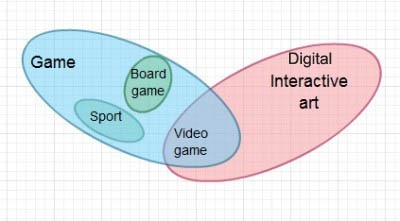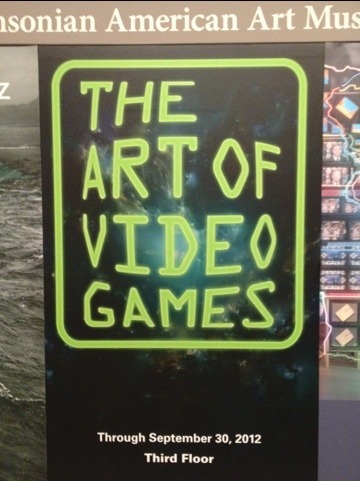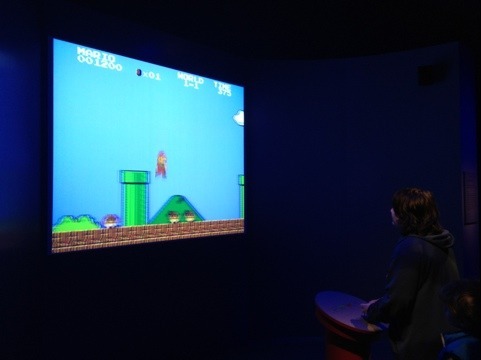Raph Koster's Blog, page 23
August 17, 2012
GDCOnline: Ultima Online postmortem

Game Developers Conference | Check out the origin of Ultima Online at GDC Online 2012.
This is one of three things that I’ll be doing at GDCO in Austin this October. I’ll let you know what the other two are as they get announced.  Have you registered yet? Why not?
Have you registered yet? Why not?
Speaker/s: Rich Vogel (Independent), Raph Koster (Playdom, San Diego) and Starr M. Long (The Walt Disney Company)
Track / Duration / Format / Audience Level: Design , Production / 60-Minute / Lecture / All
GDC Vault Recording: TBDDescription: At first, it was mostly a team of newbies. For a while, the office space was a few rooms on a floor that was gutted for construction — you could literally walk off the 5th floor of building and plunge to your death if you weren’t careful. The artists sat in the hallway. And the team was out to change everything. Ultima Online was not only one of the first graphical MMORPGs, it also set the standard for player vs player combat and sandbox/emergent gameplay in online titles for many years to come. Three of the UO team’s chief members — Raph Koster, Rich Vogel, and Starr Long (all of whom went on to shape the online gaming landscape) — will deliver a postmortem on the landmark title, reflecting on the challenges they faced from early development to maintaining the game well after its launch. Come learn how a combination of insane ambition and idealistic cluelessness can sometimes result in creating something that changes people’s lives and the course of an industry.
Takeaway: Skunkworks development can actually work! Learn about the challenges in spinning up a service organization from scratch. And what exactly happened with that crazy dragons eating deer thing?









July 6, 2012
Two cultures and games

In which I act like a crotchety old man urging the kids off my lawn.
Between this piece at Gamasutra by Neils Clark (and especially Keith Burgun‘s comments in the discussion thread), and this blog post that caught my eye, “Designing for Grace”, I am struck once again by the way in which the gap between two cultures is causing strife in the game design community.
I mean, take a look at what Jonas Kyratzes says in “Designing for Grace”:
To say that story is a form of feedback rather than a game mechanic is not so much to make an incorrect statement (well, it is, but let’s not go there now) as to make a statement about a different matter in a different language on a different planet in a different universe… [emphasis mine]
Holy Cow. Talk about a culture gap. Now, he goes on to discuss what it is he aims for, which is “grace,” and which he defines as something very real, but that the engineering-minded cannot grasp.
This is temper-tantrum-inducing for me, because I have been working hard on being an artist for a period approximately equal to the time that Jonas Kyratzes has been alive.
But I have no beef with him overall, really, because Jonas Kyratzes is reaching for the value of games.
Oh but wait, let’s look over at Keith Burgun’s comments.
Raph’s theory of fun is not a theory. It’s an attempt, like so many game design books of our sad time, to wrap up the totality of videogames into some kind of all-inclusive “summary”.
The problem with all of these design books is that they are specifically NOT theories. They basically all say the same thing: “sometimes this works, sometimes this works, sometimes this works, I don’t know, just try some stuff.” …
There can not be any real game design theory until we’re prepared to divvy up “videogames” into smaller, useful categories. A contest is not the same as a fantasy simulator. A puzzle is not the same as interactive fiction. A toy is not a game.
Theory of Fun is ten years old. I would certainly hope that the field has developed since then. But clearly, I am not being engineering-minded enough.
It’s also a little grump-inducing to see this coming from someone who caused quite a stir with an article that essentially restates almost exactly something that Chris Crawford said thirty years ago.
But that’s OK, really, because at least Keith Burgun is trying hard to reach for the truth of games.

So look, I am not just trying to call out people who are poking at things I have said. This isn’t an act of defensiveness. It’s to point out that the more people fail to look beyond their entrenched viewpoints, the less likely we are to get at the truth or the value of things.
I submit that the issue is that some designers are thinking in terms of some fellow designers as “purely engineering-minded” and other designers are thinking of fellow designers as artsy freaks.
(And it is worth pointing out that this entire debate is also a tempest in a teacup as regards the larger game industry, which is mostly trying to just make enough money to pay the rent during a recession.)
I don’t know any “purely engineering-minded designers.” I definitely do not know any successful ones. If anything, design happens to be a profession that very strongly favors people who straddle disciplines, who can have an engineering mindset and an artistic one.
I also strongly agree with Keith’s statement that people seem to get offended when we point out that something is not a game. I like Anna Anthropy’s work, but I also try to be clear-eyed about the fact that a lot of Dys4ia could be built in PowerPoint and isn’t a game.That’s not a value judgement. My value judgement of the piece as a work of expressive art is pretty high.
The pendulum swings, in terms of culture. That results in those of us who have pushed for the artistic mindset getting told that we are mechanistic engineering-mindset people.  This is a sign of success for those who advocated for more art.
This is a sign of success for those who advocated for more art.
Of course, it also means that now we have hipstery, self-indulgent, artsy, self-referential, slight, pretentious work all over the place that people are claiming as the One True Way or the best way to push the boundaries of the field.
We’re also getting more done on the science front than ever before, leading to greater understanding of game mechanics and player psychology than ever before.
Of course, this also means unethical exploitative mindgames that sacrifice our audience to the almighty dollar.
Everyone is passionate about their poles, and from the opposite side the other end always looks like something puerile and evil. And yup, both ends have excesses.
I suggest that what needs to happen is that more people need to stand in the middle, a foot on each side. Narrative designers should try making a game with nothing but counters and dice and no story. System designers should try making a game that is about telling a story. Monetizers should try making something that people care deeply about. And (grump grump) all the theorists should try actually reading the theory that is already out there. 









June 14, 2012
GDCOnline reg is open

Game Developers Conference Online 10.09.12 – 10.11.12 | Austin, TX.
This will be the tenth anniversary of what was once known as just the “Austin Game Conference.” It has always been focused on online, from the first day, back when getting together enough people to talk about online games for multiple days was a challenge.
Now online is where it’s at — just as we were saying all those years ago. It’s shaping up to be a a great set of sessions (disclaimer: I am on the advisory board, so I am biased!).
Trivia: this means it will also be the tenth anniversary of “A Theory of Fun” — the original talk was a keynote at the very first conference.









June 6, 2012
Ray Bradbury, RIP

It was a quiet morning, the town covered over with darkness and at ease in bed. Summer gathered in the weather, the wind had the proper touch, the breathing of the world was long and warm and slow. You had only to rise, lean from your window, and know that this indeed was the first real time of freedom and living, this was the first morning of summer.
Douglas Spaulding, twelve, freshly wakened, let summer idle him on its early-morning stream. Lying in his third-story cupola bedroom, he felt the tall power it gave him, riding high in the June wind, the grandest tower in town. At night, when the trees washed together, he flashed his gaze like a beacon from this lighthouse in all directions over swarming seas of elm and oak and maple. Now . . .
“Boy,” whispered Douglas.
May 10, 2012
Minor blog downtime

The blog’s hosting server is getting an upgrade sometime in the next 48 hours… there will likely be some downtime in the early morning hours. They tell me it may last up to a couple of hours.









April 20, 2012
GDC Online 2012 Call for Speakers

I’m on the Advisory Board again this year. Submit your talks!
GDC Online 2012 Call for Speakers Open through May 2
The call for submissions to present lectures, roundtables, full day tutorials and
panels at the Game Developers Conference (GDC) Online 2012 is
now open through Wednesday, May 2nd.GDC Online focuses on the development of connected games including
social network titles, free-to-play web games, kid-friendly online
titles, large-scale MMOs, and beyond. The event returns to Austin, Texas
on October 9-11, 2012.The advisory board is seeking submissions from social & online game
professionals with expertise in any of the following tracks: Business
& Marketing, Design, Production, Programming and Customer Experience.
We are also accepting submissions for the four summit programs; Game
Narrative Summit, Smartphone & Tablet Games Summit, Game Dev Start-Up
Summit and GDC Gamification Summit.*Please see our submission guidelines and full details here:
http://www.gdconline.com/conference/c4p/index.html*Submit a proposal here:
http://online2012.gdc4p.com/









April 4, 2012
Art of Video Games at the Smithsonian

I went to the Art of Video Games exhibit at the Smithsonian today. A few pics:
All in all, it was basically a very well-put-together survey, with nothing really too provocative or illuminating to people really immersed in it all. But I would guess that for many of the adults there who were mostly reminiscing about the Commodore 64 (based on what I overheard), some of the discussion in the video loops on narrative and consequence was probably quite novel.
Definitely a narratologically tilted set of videos btw. 
Kudos to Chris Melissinos (who called me when he saw me tweeting from the exhibit!) and everyone else in putting it together!
I was amused by all the kids walking around playing games on their DSes in the midst of the exhibit.









March 20, 2012
Do auction houses suck?

Once upon a time, there was a game set in a science fiction universe where the economy was very important. Its name was not Eve.
In this game, players could, if they so chose, run a business. They could
designate a building as a shophire an NPC bot to stand in itgive the bot items to hold for salespecify the prices at which those items would sellcustomize the bot in a variety of waysmake use of advertising facilities to market the shopdecorate the shop any way they pleasedWith this basic facility, emergent gameplay tied to the way that the crafting system worked resulted in players who chose to run shops being able to do things Ike build supply chains, manage regular inventory, develop regular customer bases, build marketing campaigns, and in general, play a lemonade stand writ large.
The upshot was that at peak, fully half the players in Star Wars Galaxies ran a shop.
Now, most of these players engaged in the system in a shallow way. Advanced versions of the capabilities cited above were unlocked based on RPG-style advancement. You had to choose to do a lot of merchant activity in order to get Merchant XP, in order to unlock more advanced advertising capabilities etc. But even a dabbler could run a small business.
Advanced players actually made the economy their entire game, working either solo or in highly organized guilds, managing oilfields worth of harvesters, factory towns worth of crafting stations, and whole malls.
The economy in something like World of Warcraft is very different in character. The peak populations on a shard in each game were comparable, though of course WoW achieved far far higher subscriber numbers in aggregate. But the peak of economic play in WoW is essentially basic arbitrage, timing the market.
There are several factors that make the functioning of the two economies radically different, of course.
in WoW all the best stuff is spawned as a result on combat. In SWG it was crafted by players.in WoW nothing breaks; instead you outlevel it. In original SWG everything decayed.in WoW a lot of the most valuable items aren't actually items — they are buffs or skills in fancy dress. They aren't transferable to other players. In SWG there was no "soul binding" and anything could be traded or gifted.Fundamentally, though, the biggest difference has to do with the basic approach taken. You see, in Star Wars Galaxies we designed the economy to be a game, not a side effect. In particular, the merchant class was created to fulfill the fantasy of running your own business. It had features like decorating your shop because that is part of the fantasy of being a shopkeeper in a world such as that — to build up the equivalent of Watto's junkyard, or a Trade Federation.
And this meant that above all, one feature could not exist: the auction house.
If you think of running a business as a game, then think about what you need in order to make it fun. Game grammar tells us that you are probably playing this as an asynchronous parallel game, meaning that you are measuring yourself against other players' progress against the same opponent you fight. What's the opponent? The vagaries of supply and demand as expressed by market price. The actions of other players have an indirect effect on this system.
Remember, a game provides statistically varied opposition within a common framework — if there is no variation, we call it a puzzle, not a game. Because of this, we invested a lot of effort into creating ever-varying economic situations in SWG.
Every resource in SWG was randomly generated off of master types. We defined "iron," and gave it statistical ranges. Different kinds of iron would spawn withdifferent names, but they would all work as iron in any recipe that called for such. This meant that you might find a high-quality vein of iron, or a low quality one.Even more, it might be high quality only for specific purposes.Resource types were finite. You could literally mine out all the high quality iron there was. It would just be gone. A new iron might be spawned eventually (sometimes, very eventually!) but of course, it would be rolled up with different characteristics.And in a different place. Resources were placed using freshly generated Perlin noise maps.Crafters gambled with their resources, generating items of varying quality that were partially dependent on the resources and the recipe.Crafters could lock in specific results as blueprints, but that forced a dependency on the specific finite resource that was used, meaning that blueprints naturally obsolesced.
All of this meant that a merchant could never rely having the best item, or the most desirable item (indeed, "most desirable" could exist on several axes, meaning that there were varying customer preferences in terms of what they liked in a blaster). Word spread through informal means as to the locations of rare ore deposits. People fought PvP battles over them. People hoarded minerals just
to sell them on the market once they had become rare. And of course, they organized sites like the now defunct SWGCraft.com, which monitored all of this fluctuating data and fed it back out in tidy feeds for other sites and even apps to consume, such as this one, which was widely used by hardcore business players much like a Bloomberg terminal is by someone who plays the market.
Then it all went away. You see, a key feature of the system was that the central NPC run shops were not permitted to interfere with this. Nor was the spawn system allowed to drop high quality items as loot. The result was that if you wanted the coolest weapon, you had to hunt through player-run shops like a mad antiquer on a summer drive. The result of the above systems, you see, was an economy where it was very very hard to see the gestalt of the trade economy. You really had to hunt to find out if you had found a bargain.
For someone who just wanted to frickin' buy a blaster, it was very inconvenient.
In other words, we had local pricing in full effect. This meant that the individual merchant, who, remember, was there to fulfill the fantasy of running a small business, could get away with not being being great at it.
In the real world, we are rapidly approaching a perfect information economy. I can instantly look up the varying prices of something I want, determine the one with the lowest actual cost to me (price, shipping, time to arrival, physical location, quality, etc), and get exactly what I want. It is a world optimized for the buyer.
The experience for the seller, though, is not generally awesome, unless they happen to have the scale that drives victory in a winner takes all scenario. The big guys can essentially dictate prices by undercutting everyone. They dominate the visible market, and can drown out the smaller or more unique offerings. In this sort of world, the funky used bookstore with the awesome decor tends to die, and it doesn't matter how much fun the shop owner had in coming up with said decor.
SWG eventually did put in a serverwide auction house, responding to WoW. It made life easier for the buyers. But it created a perfect information economy, and all that complexity and variation that was present in the market earlier fell away. Small shopkeepers were shut out of markets.
If that happens to you in a game, you don't find another line of work. You quit.
So do auction houses suck? No, not if your game is about getting. It is a better experience for a gamer interesting in getting.
But the fantasy of running a shop, or being a business tycoon, is not just about the getting. It is about the having — of relationships, of an empire, of a well-oiled machine. It is about running things, not about working your way up a chain of gewgaws. The gewgaws are a way to keep score, but you play the game for the sake of the game.
SWG was not a game about getting. After all, everything you could get in the game eventually broke. It was about the having. Having your shops, your town, your supply chain, your loyal customers, your collectible Krayt dragon skull or poster or miniature plush Bantha like in the Christmas Special.
When the merchant changes went in to SWG, the merchants went out.
Getting is kind of addictive. For a mass market audience, it may well be the path to greater acceptance and higher profits. Me, I like funky bookstores; but I have to admit I usually buy from Amazon. It's convenient.
The lesson here is that sometimes features that make things better for one player make them dramatically worse for another. Every time you make a design choice you are closing as many doors as you open. In particular, you should always say to yourself,
I'm adding this feature for player convenience. How many people live for the play that this inconvenience affords?
The small shopkeepers; the socializers who need the extra five minutes you have to spend waiting for a boat at the Everquest docks; the players who live to help, and can't once every item is soul bound and every fight is group locked and they can't even step in to save your life; the role player who cannot be who they wish to be because their dialogue is prewritten; the person proud of his knowledge of the dangerous mountains who is bypassed by a teleporter; the person who wants to be lost in the woods and cannot because there is a mini-map.
Every inconvenience is a challenge, and games are made of challenges. This means that every inconvenience in your design is potentially someone's game.









March 15, 2012
The best game design articles on the site



This is post #2,342 on this blog (not counting the dozens of articles, snippets, and presentations not in the blog database)… yet more of the over a quarter-million words written here since the site started in 1997 and the blog in 1998. And I have to admit, I tend to take for granted the idea that people have read all the stuff that matters, so they understand me when I throw around terms or assume that they know what my past writing on the topic is. Whih is ludicrous, of course.
So I got asked on Twitter for a list of my juiciest game design posts, to serve as a central jumping-off point.
This was hard. But here's a list of ones that I think are my best. Many of these are actually talks, rather than posts. These are usually in sort of rough reverse chronological order, but there's plenty of places where they are juts in the order I found them in, or random cut & paste order.
Feel free to list your own favorites in the comments. And if you haven't seen some of these before, well, this is the best way to catch up on my overall beliefs and philosophies on games.
Theory of fun (cognition and games) and game grammar overview. This covers the very highest level structure of the thinking on these two interrelated subjects.
http://www.raphkoster.com/gaming/atof/theoryoffun.pdfhttp://www.raphkoster.com/2006/08/02/chunking-chess-and-fighting-thread/http://www.raphkoster.com/2007/03/29/etech07-the-core-of-fun/http://www.raphkoster.com/2012/01/24/an-atomic-theory-of-fun-game-design/http://www.raphkoster.com/2006/03/05/a-bit-on-how-i-think-games-work/http://www.raphkoster.com/gaming/atof/grammarofgameplay.pdfhttp://www.raphkoster.com/2009/09/22/gdca-games-are-math-slides-posted/http://www.raphkoster.com/2005/10/29/pondering-caillois/Game grammar articles, diving deeper into specificall analyzing a single feature, or a single aspect of the grammar.
http://www.raphkoster.com/2012/03/13/x-isnt-a-game/http://www.raphkoster.com/2012/01/20/narrative-is-not-a-game-mechanic/http://www.raphkoster.com/2012/01/26/narrative-isnt-usually-content-either/http://www.raphkoster.com/2011/12/13/rules-versus-mechanics/http://www.raphkoster.com/2011/12/08/notes-on-game-feedback/http://www.raphkoster.com/2011/12/09/game-feedback-hide-and-seek/http://www.raphkoster.com/2011/03/10/replay-as-meditation/http://www.raphkoster.com/2007/09/05/agdc07-designing-for-everywhere/http://www.raphkoster.com/2008/07/09/a-game-designers-core-skills/http://www.raphkoster.com/2008/07/03/game-grammar-in-action-aocs-dps-bug/http://www.raphkoster.com/2006/01/06/undressing-a-game/http://www.raphkoster.com/2006/06/08/hints-and-riddles/http://www.raphkoster.com/2006/02/10/are-single-player-games-doomed/http://www.raphkoster.com/2006/02/15/have-single-player-games-ever-existed/On the game development process. These articles are about the process of making the sausage, about production.
http://www.raphkoster.com/2012/01/25/fun-vs-features/http://www.raphkoster.com/2008/07/02/do-players-know-what-they-want/http://www.raphkoster.com/2006/06/26/40-ways-to-be-a-better-game-designer/http://www.raphkoster.com/2005/11/01/how-to-prototype-a-game-in-under-7-days/http://www.raphkoster.com/2007/11/02/typical-game-dev-teams/http://www.raphkoster.com/2007/11/02/using-scripting-languages/http://www.raphkoster.com/2007/06/19/my-vision-doc-outline/http://www.raphkoster.com/gaming/designprocess.shtmlhttp://www.raphkoster.com/gaming/contentcreation.shtmlhttp://www.raphkoster.com/2006/01/17/iteration-in-games-a-mini-rant/http://www.raphkoster.com/2006/01/06/undressing-a-game/http://www.raphkoster.com/2005/12/07/player-centered-design/On experience/narrative design. Even though I have been on a ludologically-inclined blogging kick lately, I have also spent plenty of time on the narrative and environmental qualities of games.
http://www.raphkoster.com/2012/01/13/is-immersion-a-core-game-virtue/http://www.raphkoster.com/2012/01/14/faq-on-the-immersion-post/http://www.raphkoster.com/gaming/narrativeenvironments.shtmlhttp://www.raphkoster.com/gaming/gdc_2002_Storytelling.htmhttp://www.raphkoster.com/2009/06/29/is-game-design-songwriting-or-performance/http://www.raphkoster.com/2009/06/08/avatar-body-language/http://www.raphkoster.com/2009/05/06/avatars-arent-tokens/http://www.raphkoster.com/2006/03/02/the-healing-game/http://www.raphkoster.com/2006/06/09/why-dont-our-npcs/http://www.raphkoster.com/2007/12/12/the-march-of-commodificationhttp://www.raphkoster.com/2007/11/14/salsipuedes-leave-if-you-can/http://www.raphkoster.com/2007/06/20/whither-online-2/http://www.raphkoster.com/2007/03/27/exploiting-the-space/http://www.raphkoster.com/gaming/socialization.shtmlhttp://www.raphkoster.com/2005/12/07/the-pixar-lesson/On games as art. I got on this hobbyhorse around 1996 and have never stopped. This section includes reactions to a few games analyzed as art.
http://www.raphkoster.com/gaming/interactiveentertainment.shtmlhttp://www.raphkoster.com/gaming/caseforart.shtmlhttp://www.raphkoster.com/gaming/games-as-art.shtmlhttp://www.raphkoster.com/2006/06/13/ambition/http://www.raphkoster.com/2006/08/30/playing-for-fun/http://www.raphkoster.com/2011/03/16/art-game-thoughts-re-chain-world/http://www.raphkoster.com/2007/01/27/pondering-pinatas/http://www.raphkoster.com/2007/02/16/but-is-it-art-2/http://www.raphkoster.com/2009/02/13/atof-tetris-variant-comes-truehttp://www.raphkoster.com/2008/12/12/games-about-torture/http://www.raphkoster.com/2008/11/15/game-informer-on-impostor-games/http://www.raphkoster.com/2006/02/24/what-are-the-lessons-of-mmorpgs-today/http://www.raphkoster.com/2006/11/10/project-horseshoe-influences/General game design. Just a catch-all. Most of these are about MMO design in one way or another.
http://www.raphkoster.com/2010/10/12/the-fundamentals-of-game-design/http://www.raphkoster.com/2009/09/11/a-really-old-game-design-essay/http://www.raphkoster.com/2009/01/09/what-is-a-diku/http://www.raphkoster.com/2009/01/07/the-borders-of-user-created-content/http://www.raphkoster.com/2008/11/17/why-are-corpse-runs-bad/http://www.raphkoster.com/2008/04/22/interdependent-systemshttp://www.raphkoster.com/2008/04/17/how-to-hack-an-mmo/http://www.raphkoster.com/2008/04/09/is-there-such-as-thing-as-a-casual-online-world/http://www.raphkoster.com/2008/03/25/a-brief-history-of-botting/http://www.raphkoster.com/2006/02/10/are-single-player-games-doomed/http://www.raphkoster.com/2006/06/20/user-created-content/http://www.raphkoster.com/2005/12/16/do-levels-suck/http://www.raphkoster.com/2005/12/22/do-levels-suck-part-ii/http://www.raphkoster.com/2006/07/18/use-based-systems/http://www.raphkoster.com/gaming/despat.htmlhttp://www.raphkoster.com/gaming/cooperative-static.shtmlhttp://www.raphkoster.com/2006/08/28/do-classes-suck/http://www.raphkoster.com/2007/04/23/the-game-without-treadmills/http://www.raphkoster.com/2006/01/29/are-mmorpgs-games/http://www.raphkoster.com/2006/03/31/are-muds-and-mmorpgs-the-same-thing/http://www.raphkoster.com/2008/01/02/does-static-info-work-anymore/http://www.raphkoster.com/2007/12/18/what-is-cheating/http://www.raphkoster.com/2007/12/28/you-are-all-cheaters/http://www.raphkoster.com/2006/09/02/classes-and-balance/http://www.raphkoster.com/2006/08/29/giving-them-what-they-want/http://www.raphkoster.com/2006/05/15/exceptionalism/http://www.raphkoster.com/2005/12/08/feelin-groovy-a-rant/http://www.raphkoster.com/2005/11/15/blue-world/Game economies. A large enough sub-category of the design stuff that I pulled it out.
http://www.raphkoster.com/2011/07/01/does-a-virtual-economy-affect-player-retention/http://www.raphkoster.com/2009/04/28/why-isnt-money-points/http://www.raphkoster.com/2007/01/17/flation/http://www.raphkoster.com/2007/01/20/more-on-flation-and-the-future/http://www.raphkoster.com/2007/12/24/dermtingwow/http://www.raphkoster.com/2007/12/23/digging-more-into-rmt/http://www.raphkoster.com/2007/12/21/does-trading-suck/http://www.raphkoster.com/2007/08/20/why-have-gold-anyway/Community design. These all have community in common in one way or another. They do not touch on community management, however — see lower down for that.
http://www.raphkoster.com/gaming/laws.shtmlhttp://www.raphkoster.com/2011/02/28/gdc11-slides-for-social-mechanics-talk/http://www.raphkoster.com/2011/02/01/designing-for-community/http://www.raphkoster.com/2005/12/09/forcing-interaction/http://www.raphkoster.com/2009/03/10/some-zone-design-lessons/http://www.raphkoster.com/2009/02/11/the-eve-upset/http://www.raphkoster.com/2009/02/04/ways-to-make-your-social-space-more-gamey/http://www.raphkoster.com/2009/01/28/ways-to-make-your-virtual-space-more-social/http://www.raphkoster.com/gaming/smallworlds.htmlhttp://www.raphkoster.com/2007/02/06/ganking-meaning-and-playing-as-you-arehttp://www.raphkoster.com/2006/05/10/yellow-mustangs-crossgender-avatars-and-victorias-secret/http://www.raphkoster.com/2006/02/02/rep-systemsSWG design articles/anecdotes. No full post-mortem though.
http://www.raphkoster.com/2010/04/30/dynamic-pois/http://www.raphkoster.com/gaming/pkphilosophy.shtmlhttp://www.raphkoster.com/2006/07/19/community-building/http://www.raphkoster.com/2006/07/05/the-arts-in-mmoshttp://www.raphkoster.com/2006/01/04/treating-players-like-numbers/UO design articles/anecdotes. For this one, the postmortem comes first. 
Misc other game postmortems. I have never written up anything about dozens of the games I have made. But here is some stuff, particularly the design blogs for Andean Bird.
http://www.raphkoster.com/2005/12/17/beowulf/http://www.raphkoster.com/2009/03/10/metaplace-game-jam-postmortem/http://www.raphkoster.com/2006/07/11/a-vague-game-idea/http://www.raphkoster.com/2006/07/14/pking-duck-more-on-the-vague-game-idea/http://www.raphkoster.com/2006/07/20/vague-game-less-vague-andean-bird-03/http://www.raphkoster.com/2006/08/23/andean-bird-04/http://www.raphkoster.com/2006/09/19/in-the-newbies-shoes/On ethics in game design. Another long-standing hobbyhorse. These have to do with ethical game design specifically.
http://www.raphkoster.com/2007/03/20/under-the-gaming-influence/http://www.raphkoster.com/2012/03/09/gdc2012-slides-for-good-bad-great-design/http://www.raphkoster.com/2008/11/04/ugc-and-ip-in-a-cloning-world/http://www.raphkoster.com/2005/12/30/the-evil-we-pretend-to-do/http://www.raphkoster.com/gaming/essay5.shtmlhttp://www.raphkoster.com/gaming/essay4.shtmlhttp://www.raphkoster.com/2006/02/04/on-trust-part-i/http://www.raphkoster.com/2006/02/06/on-trust-part-ii/http://www.raphkoster.com/2006/03/13/on-trust-part-iii/http://www.raphkoster.com/2006/03/14/on-trust-part-35-balkanization/http://www.raphkoster.com/2006/08/01/virtual-heroism/On player rights. These are about treating players ethically.
http://www.raphkoster.com/gaming/playerrights.shtmlhttp://www.raphkoster.com/2011/04/10/avatar-rights-come-back/http://www.raphkoster.com/2006/07/03/the-commandments-of-online-worlds/http://www.raphkoster.com/2007/04/10/paternalistic-or-libertinehttp://www.raphkoster.com/gaming/ethicsofonlinedesign.shtmlOn serious games/gamification. I started writing about serious games around when the book came out, long before "gamification" was a buzzword.
http://www.raphkoster.com/2011/01/04/feedback-does-not-equal-game-design/http://www.raphkoster.com/2010/02/18/gameifying-everything/http://www.raphkoster.com/2008/12/09/the-ludic-fallacy/http://www.raphkoster.com/gaming/influences.shtmlhttp://www.raphkoster.com/2006/12/02/games-for-change-closing-address/http://www.raphkoster.com/2008/03/19/should-virtual-worlds-change-the-real/http://www.raphkoster.com/2006/01/04/treating-players-like-numbers/On games as a business. Most of the business-related articles are obsolete, since they were of their time. However, I linked stuff here that was either generally useful, or that dealt specifically with large-scale changes in the industry.
http://www.raphkoster.com/2006/01/09/innovation-evolution-and-adaptation/http://www.raphkoster.com/2012/01/11/f2p-vs-subs/http://www.raphkoster.com/2012/01/10/product-versus-art/http://www.raphkoster.com/2006/12/02/the-algorithm-or-art/http://www.raphkoster.com/2012/01/09/improving-f2p/http://www.raphkoster.com/2010/02/26/are-virtual-worlds-over/http://www.raphkoster.com/2008/09/10/virtual-worlds-in-the-ambient-cloud/http://www.raphkoster.com/gaming/moore.shtmlhttp://www.raphkoster.com/gaming/kgc2005.shtmlhttp://www.raphkoster.com/2006/06/01/measuring-mmos/http://www.raphkoster.com/2005/12/12/the-future-of-content/http://www.raphkoster.com/2008/01/23/core-casualties/http://www.raphkoster.com/2008/01/18/what-will-the-gamers-do/http://www.raphkoster.com/2006/11/24/are-microtransactions-actually-the-future/http://www.raphkoster.com/2006/11/15/copybotOn community & marketing. Two deeply related topics. These are mostly advice on how to do community relations.
http://www.raphkoster.com/gaming/essay1.shtmlhttp://www.raphkoster.com/2003/04/14/revisiting-the-garden-of-remembrance/http://www.raphkoster.com/gaming/gdc_2002_community.htmhttp://www.raphkoster.com/2006/10/05/players-who-post-posters-who-play/http://www.raphkoster.com/2006/09/29/community-relations-management-design-and-governance/ http://www.raphkoster.com/2008/11/05/marketing-in-games-vs-web/http://www.raphkoster.com/2011/07/21/10-game-design-lessons-for-games-as-service-my-cc2011-talk/http://www.raphkoster.com/2011/06/30/marketing/http://www.raphkoster.com/2005/12/05/where-does-popularity-come-from-or-the-wisdom-of-crowds-revisited/








March 13, 2012
“X” isn’t a game!

I called this out as one of the trends I saw at GDC. Last year, people were saying that Farmville was not a game, and I argued that it was. This year, I wrote about narrative not being a mechanic and had to extend my comments on it because of the controversy, and Tadhg Kelly bluntly said “Dear Esther is not a game.” At GDC, the rant session featured Manveer Heir saying that it was arrogant and exclusionary not to consider it a game, and arguing that the boundaries of “game” needed to be large and porous. Immediately after, Frank Lantz gave his own rant, which used sports extensively as examples of games.
The definition of game that most people — and I am particularly thinking here of the layman’s use of the term — is basically something like “a form of play which has rules and a goal.” Lots of practitioners and academics have tried pinning it down further. I’ve offered up my own in the past:
Playing a game is the act of solving statistically varied challenge situations presented by an opponent who may or may not be algorithmic within a framework that is a defined systemic model.
 Some see this as a “fundamentalist” approach to the definition. But I use it precisely because it is inclusive. It admits of me turning a toy into a game by imposing my own challenge on it (such as a ball being a toy, but trying to catch it after bouncing it against the wall becoming a game with simple rules that I myself define). It admits of sports. It admits of those who turn interpersonal relationships, or the stock market, or anything else, into “a game.”
Some see this as a “fundamentalist” approach to the definition. But I use it precisely because it is inclusive. It admits of me turning a toy into a game by imposing my own challenge on it (such as a ball being a toy, but trying to catch it after bouncing it against the wall becoming a game with simple rules that I myself define). It admits of sports. It admits of those who turn interpersonal relationships, or the stock market, or anything else, into “a game.”
Basically, I see this whole issue as this Venn diagram. I group sports, boardgames, and yes, videogames under “game” because all of them are susceptible to being broken down and analyzed with game grammar. They all have rules. They all have an “opponent” that presents varied challenges to the player. They all have a feedback loop. They all present verbs to the player. They all present goals. The fact that some use real-world physics as the opponent, some use the human body, some use dice or boards, and some use a computer is not even relevant when you break down the game atoms. I can group these easily because I’ve dug into them so much that I know there is something there in common.
That isn’t to say it isn’t a very wide net — I wrote about games that fall on the boundary and seem lacking in goals altogether years ago, and still lumped them under game.
This doesn’t mean I dislike all the huge potential that is in the other side of the diagram. On the contrary — Andean Bird began over on that side, and arguably was more successful there than as a game. And anyone who has followed what I’ve written over the last fifteen years knows that I believe that games can be art.
The question is whether that entire red area should have the name “videogame,” which is what some are advocating. And I am resistant to that, in part because I suspect a Powerpoint slide deck could live over there. The unifying factor seems to simply be “displayed on a computer” to me. Mind you, I have great sympathy for the notion that a digital platform enables great new things for art! On the other hand, I also know that computers are not solely electronic, so even that boundary line feels a bit awkward.
So we could call all that stuff “game.” Or alternatively, we need a name for what Dear Esther is, and that seems to me a simpler problem than renaming the category that encompasses baseball and tiddlywinks, which have both been called games for a very long time.
That said, I don’t see any reason why that should be regarded as dismissive, exclusionary, or derogatory. Videogame designers have been crosspollinating with digital artists for a loooong time now — I think for example of Zach Simpson’s work — and I think that the game developer community is certainly welcoming enough to things that live at the boundaries of either game or interactive art.
In short – there’s no reason to call each other names. But naming things is still a valuable exercise, and I’d hate to lose precision on something that we are finally able to pin down.























